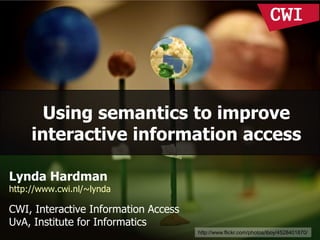The document discusses improving interactive information access using semantics, emphasizing the importance of understanding intended messages and context behind media assets. It outlines mechanisms for identifying and annotating media, presents examples of systems for user interaction with metadata, and highlights the role of semantics in facilitating flexible access to media collections. The document also explores applications like the Cewe Color photobook and video documentaries, showcasing how metadata can enhance user experience and content manipulation.

















































